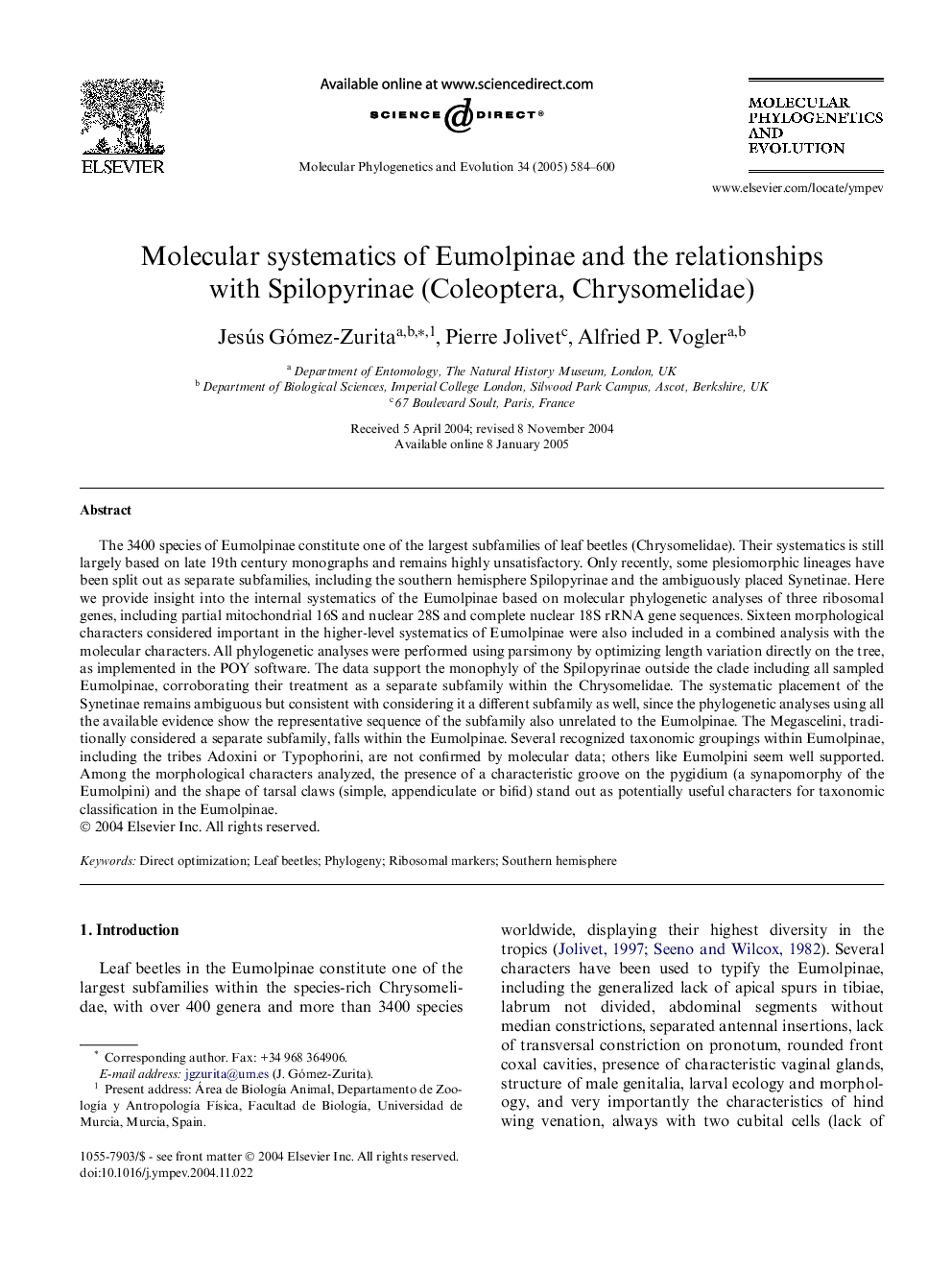| Article ID | Journal | Published Year | Pages | File Type |
|---|---|---|---|---|
| 9143169 | Molecular Phylogenetics and Evolution | 2005 | 17 Pages |
Abstract
The 3400 species of Eumolpinae constitute one of the largest subfamilies of leaf beetles (Chrysomelidae). Their systematics is still largely based on late 19th century monographs and remains highly unsatisfactory. Only recently, some plesiomorphic lineages have been split out as separate subfamilies, including the southern hemisphere Spilopyrinae and the ambiguously placed Synetinae. Here we provide insight into the internal systematics of the Eumolpinae based on molecular phylogenetic analyses of three ribosomal genes, including partial mitochondrial 16S and nuclear 28S and complete nuclear 18S rRNA gene sequences. Sixteen morphological characters considered important in the higher-level systematics of Eumolpinae were also included in a combined analysis with the molecular characters. All phylogenetic analyses were performed using parsimony by optimizing length variation directly on the tree, as implemented in the POY software. The data support the monophyly of the Spilopyrinae outside the clade including all sampled Eumolpinae, corroborating their treatment as a separate subfamily within the Chrysomelidae. The systematic placement of the Synetinae remains ambiguous but consistent with considering it a different subfamily as well, since the phylogenetic analyses using all the available evidence show the representative sequence of the subfamily also unrelated to the Eumolpinae. The Megascelini, traditionally considered a separate subfamily, falls within the Eumolpinae. Several recognized taxonomic groupings within Eumolpinae, including the tribes Adoxini or Typophorini, are not confirmed by molecular data; others like Eumolpini seem well supported. Among the morphological characters analyzed, the presence of a characteristic groove on the pygidium (a synapomorphy of the Eumolpini) and the shape of tarsal claws (simple, appendiculate or bifid) stand out as potentially useful characters for taxonomic classification in the Eumolpinae.
Related Topics
Life Sciences
Agricultural and Biological Sciences
Ecology, Evolution, Behavior and Systematics
Authors
Jesús Gómez-Zurita, Pierre Jolivet, Alfried P. Vogler,
